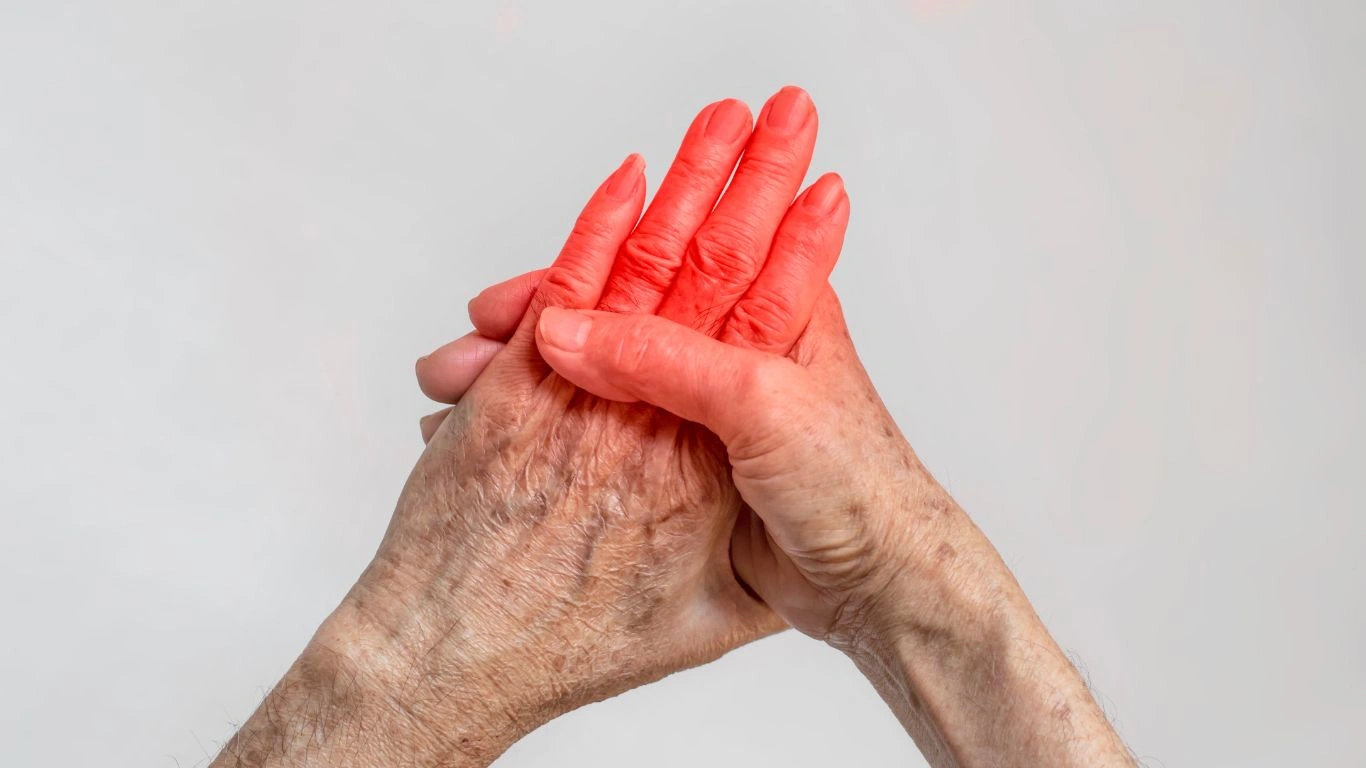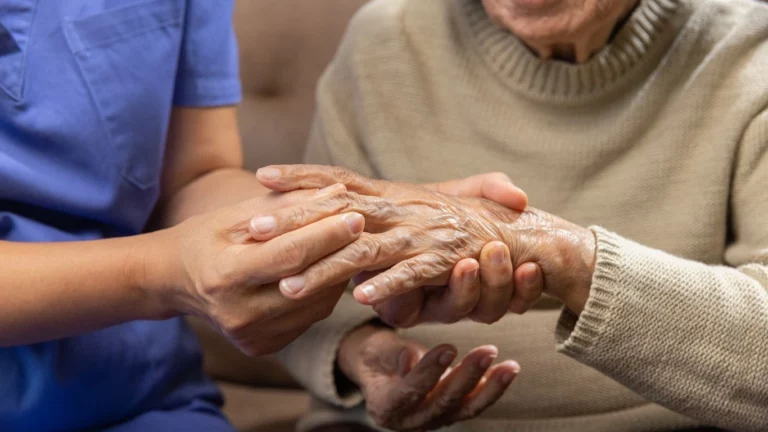Empowering Ways to Manage Rheumatoid Arthritis with Mindfulness
Living with rheumatoid arthritis isn’t just about managing the flare-ups and medication schedules—it’s also about navigating daily life with a chronic condition that doesn’t always play fair. In my years as a Rheumatology Nurse Practitioner, I’ve seen firsthand how much of a toll RA can take—not just physically, but emotionally and mentally. That’s why I’m diving into something I’ve found incredibly powerful and often underutilized: managing rheumatoid arthritis with mindfulness. Yep, mindfulness. It might sound like a trendy buzzword, but trust me, it’s got real teeth when it comes to chronic illness management. And no, it’s not about sitting cross-legged and chanting (unless that’s your thing). It’s about small, doable shifts that make a big difference. Let me break it down for you.
What Is Mindfulness (And Why Should You Care)?

Mindfulness, at its core, is simply being fully present. That means tuning into the moment without judgment. Sounds simple, right? But in the chaos of appointments, pain management, fatigue, and trying to maintain a somewhat normal life—it’s easy to get disconnected from your body and your mind.
RA patients, in particular, can really benefit from this approach. Chronic pain messes with your nervous system and your brain’s threat detection—it keeps you in a kind of “always on” state. Practicing mindfulness gives your system a break. It teaches you how to recognize what’s happening in your body without spiraling into anxiety or frustration.
My First Real Encounter With Mindfulness in RA Care
I remember this one patient—let’s call her Sandy. She had been battling RA for over a decade and felt like her body had turned against her. Meds helped, but not enough. We started working mindfulness into her daily routine. Nothing fancy. Just five-minute body scans and breathwork in the morning. After a few weeks, she told me she felt more in control, less overwhelmed, and—surprisingly—her pain levels dropped slightly. It wasn’t a miracle cure, but it was a game-changer in how she related to her pain.
How Mindfulness Impacts Rheumatoid Arthritis Physically and Mentally

Let’s talk science for a sec—but I’ll keep it light, I promise. Chronic inflammation in RA doesn’t just affect your joints; it messes with your mind too. Stress triggers cortisol spikes, and guess what? Cortisol can fuel inflammation. So, when you’re constantly stressed (and who isn’t when you’re in pain all the time?), you’re basically adding fuel to the fire.
Mindfulness practices—like meditation, mindful breathing, and even mindful eating—help regulate the stress response. Studies have shown that people who practice mindfulness regularly have lower levels of inflammatory markers. Plus, it helps with:
- Reducing perceived pain intensity
- Improving sleep quality (yes, finally!)
- Lowering anxiety and depressive symptoms
- Boosting emotional resilience
It’s like giving your mind a break from constantly fighting your body.
Mindfulness Isn’t Just Meditation
This is where a lot of people get stuck. They hear “mindfulness” and think they need to become a Zen monk overnight. Nope. There are many different ways to bring mindfulness into your routine. Here are a few my patients and I have used successfully:
- Mindful Movement: Gentle yoga or Tai Chi that focuses on breathing and body awareness—great for stiff joints and staying mobile.
- Guided Meditation Apps: Headspace, Insight Timer, Calm—these are fantastic for beginners and offer quick sessions you can do anytime.
- Body Scan Techniques: Lie down, breathe deeply, and mentally scan each part of your body. You’d be surprised how much tension we hold unknowingly.
- Mindful Journaling: Not just writing down your symptoms—write how you feel, what triggers stress, what moments bring joy, even if it’s just a good cup of coffee.
Small Shifts, Big Results: Real-Life Tips for Getting Started

When I first started recommending mindfulness to my RA patients, I made sure to emphasize one thing—start small. You don’t have to overhaul your entire lifestyle overnight. In fact, please don’t. That’s a fast track to burnout. Instead, think of mindfulness as a new tool in your toolbox. You’re not replacing your medications or your treatments; you’re adding something that supports them.
Here are a few entry points:
- Begin with 3 minutes of deep breathing when you wake up. No phone, no talking—just you and your breath.
- Set a reminder to pause at lunch and eat without distractions. Savor each bite.
- Keep a small journal by your bed and jot down 3 things you’re grateful for, even on rough days.
- Take one “mindful walk” a week. Leave the music or podcast behind and just notice your surroundings.
These things sound simple, but the impact is huge. I’ve had patients tell me it changed how they talk to themselves, how they manage pain flares, and how they show up for their families.
Mindfulness for Flare Days: Staying Grounded When RA Fights Back

Let’s be real—RA flare days can feel like your body has completely betrayed you. Everything aches, you’re exhausted, and even getting out of bed feels like a battle. I’ve had patients call me in tears, not because the pain was new, but because it was *relentless*. That’s where managing rheumatoid arthritis with mindfulness really starts to shine. It’s not just about avoiding stress—it’s about creating an anchor when everything else feels out of control.
On flare days, I often recommend what I call “mindful rest.” It’s not sleep. It’s not zoning out in front of Netflix (though hey, we all need that sometimes too). It’s intentional stillness. A moment where you say, “Okay, this is hard, but I’m still here.” It’s about checking in—not checking out.
Try This: Grounding Exercise for Flare Days
One of my favorite tools is the 5-4-3-2-1 grounding method. It’s quick, requires zero prep, and you can do it lying in bed during a flare:
- 5 things you can see – Look around and mentally name them.
- 4 things you can touch – Feel your blanket, your skin, the texture of your clothes.
- 3 things you can hear – Focus in. Even silence has a hum.
- 2 things you can smell – Your pillowcase? Lotion?
- 1 thing you can taste – Even just a sip of tea or water.
It sounds simple, but I’ve had patients tell me it helped shift their perspective on the worst days. You don’t “escape” the pain, but you make space for something else to coexist with it.
Mindfulness and Medication: A Team, Not a Competition

Now, let’s clear up a big misconception I hear a lot: mindfulness doesn’t mean you ditch your meds. I would never recommend that. In fact, as someone who’s worked in clinical rheumatology for years, I believe in the power of evidence-based medicine. Biologics, DMARDs, NSAIDs—they play a crucial role. But so does the mind-body connection.
I often tell my patients: your meds manage the inflammation, and mindfulness helps manage your *response* to it. When you combine both? That’s when you start seeing real, sustainable progress—not just physically, but emotionally too.
Mindfulness to Combat Medication Anxiety
Another thing we don’t talk about enough? The anxiety some people feel about taking long-term medications. I’ve seen patients struggle with guilt, fear of side effects, or just the emotional weight of needing “so many pills.” Mindfulness can help you process those emotions instead of burying them. Even just journaling or breathwork around medication time can reduce tension and turn that moment into a ritual of self-care rather than something negative.
Mindful Eating: Fueling Your Body With Purpose

You didn’t think I was gonna skip food, did you? One of the most overlooked areas of managing rheumatoid arthritis with mindfulness is how you eat, not just what you eat. Anti-inflammatory diets are important (I’m a big fan of the Mediterranean approach), but how you approach meals is just as crucial.
Mindful eating is about more than slowing down. It’s about tuning in to what your body actually needs. When you eat distracted—rushing, scrolling, or multitasking—you miss your body’s signals. That can lead to overeating, inflammation, or just feeling kind of “meh” after meals.
Quick Mindful Eating Tips for RA Patients
- Set the scene: Turn off distractions. Light a candle. Make it an experience, even if it’s just a quick lunch.
- Chew slowly: It sounds obvious, but most of us don’t do it. It helps digestion and lets your body catch up.
- Use all your senses: Notice the colors, smells, textures. It helps you connect with your food in a healing way.
- Be kind: If you grab fast food once in a while—no shame. Mindfulness includes compassion, especially for yourself.
I had a patient who started doing just this—eating mindfully without changing much else. She noticed she stopped eating when she was full more often and had fewer post-meal joint flare-ups. Wild how small tweaks add up.
Creating a Personal Mindfulness Plan That Sticks
Let’s be honest: sticking to any new habit is hard, especially when chronic fatigue or pain throws off your whole schedule. But from what I’ve seen, people do best when they treat mindfulness like brushing their teeth—not optional, just a daily hygiene for your brain.
Here’s a Simple Framework That Works:
- Pick one anchor time: Morning wake-up? Before dinner? Right before bed? Attach your mindfulness habit to a moment that already exists.
- Keep it short at first: Seriously, 2–3 minutes is enough to start. The goal is consistency, not perfection.
- Track it: Use a little calendar or app to check off the days. Visual progress feels good, especially on rough days.
- Re-evaluate monthly: What’s working? What feels forced? Adjust without guilt. Mindfulness is supposed to help, not stress you out.
One of my longtime RA patients even created a “mindfulness basket” by her bed with lavender oil, a journal, a stress ball, and her favorite guided meditation playlist. She said just seeing it there made her feel more grounded before even doing anything.
Remember, you don’t have to get this perfect. The beauty of mindfulness is that it meets you where you are. Whether you’re having a good day, a flare day, or one of those “can’t even” kind of days—it’s there, like a reset button you can always press.
How to Stay Consistent: Building a Sustainable Mindfulness Routine

Alright, so you’ve dipped your toes into mindfulness. Maybe you’ve tried a breathing technique, or maybe you just slowed down at lunch for the first time in forever. That’s a win. But let’s talk about the part that’s actually the hardest: keeping it going.
When I talk to my RA patients about managing rheumatoid arthritis with mindfulness, one of the biggest hurdles isn’t starting—it’s sticking with it. Life gets busy. Pain flares throw you off. Family demands pop up. I get it. But here’s the thing: mindfulness doesn’t need to be another “task” on your already overwhelming to-do list. It can live quietly in the background, woven into your existing routines.
Habit-Stacking: My Favorite Trick for RA-Friendly Mindfulness
Habit-stacking is this sneaky little technique I picked up from a patient who also happened to be a teacher. You take something you already do—like brushing your teeth or having morning coffee—and add a small mindfulness practice on top of it. Boom. No extra effort needed. Some examples:
- While brushing your teeth: Do a 2-minute breath focus. Inhale, exhale. That’s it.
- While sipping your coffee: Take three deep breaths, notice the taste, the aroma, the warmth in your hands.
- Before taking your RA meds: Do a quick check-in with your body. Ask, “What do I need today?”
This kind of anchoring is especially helpful when pain or fatigue is unpredictable. Because let’s be honest—some days it’s hard to do anything extra. But if you’ve got little mindful rituals built into the bones of your day, you’re more likely to keep going even when your body isn’t cooperating.
Mindfulness & Relationships: Connecting Through Presence

Living with RA can make relationships tricky. You might feel misunderstood, or like you’re always explaining why you can’t make plans. That emotional weight builds up. I’ve seen it again and again in clinic visits—patients who are more frustrated about how RA affects their people than their joints.
This is where mindfulness steps in as an unexpected relationship tool. When you practice mindfulness regularly, you become better at responding instead of reacting. You become more present, even when conversations get hard. And most importantly, you start giving yourself the same compassion you give everyone else.
Practicing Mindful Communication
I always suggest this simple exercise when a patient is navigating tension with a partner or family member:
- Before the conversation, take three deep breaths.
- Set an intention (ex: “I want to feel heard, and I want to listen.”)
- During the talk, focus on truly hearing—not planning your reply.
- Afterward, pause again. Reflect, don’t ruminate.
This sounds basic, but trust me—it changes everything. I had one couple who came in together for a visit after trying this. They told me their entire dynamic shifted because they stopped rushing through RA-related talks and started creating space for each other. That’s mindfulness in action.
When Mindfulness Feels Impossible
Now, I’d be doing you a disservice if I didn’t say this: mindfulness isn’t always easy. There will be days when your mind races, when your pain screams louder than your breath, when you’re just flat-out over it. That’s normal. And you’re not doing it “wrong.”
Here’s what I tell my patients during those times—especially the ones who feel like they’ve failed some invisible mindfulness exam: Just show up.
You don’t have to feel calm. You don’t need perfect posture or a quiet house or 20 uninterrupted minutes. Sometimes mindfulness is a shaky breath in the bathroom while your joints throb. Sometimes it’s just saying, “This is hard right now.”
One of the core lessons of mindfulness is radical acceptance. Not resignation, but an honest, open awareness of what is—without trying to change it right this second. That alone is powerful. And as someone who’s walked beside hundreds of RA patients, I can promise you: your willingness to try matters more than you think.
Bringing It All Together
So what does managing rheumatoid arthritis with mindfulness actually look like day-to-day? It looks like presence. Small shifts. Listening to your body. Giving yourself grace. It’s not about achieving inner peace (although hey, wouldn’t that be nice?)—it’s about creating space for healing to happen in all the messy, imperfect moments.
And here’s the truth I’ve seen play out time and time again—when patients commit to even the tiniest mindfulness habits, they often report:
- Lower pain perception
- Better mood regulation
- Improved medication adherence
- Stronger relationships
- A deeper sense of self-compassion
That’s not fluff. That’s lived experience. That’s resilience in action. And as your friendly neighborhood rheumatology NP, I can’t recommend it enough.
References
Disclaimer
This article is for informational purposes only and does not constitute medical advice. Always consult with your rheumatologist or healthcare provider before making changes to your treatment plan or starting new practices like mindfulness or dietary adjustments. What works for one person may not be suitable for another, especially when managing a complex autoimmune condition like RA.

Tarra Nugroho is a dedicated Nurse Practitioner with a strong foundation in family and preventive care. She brings both compassion and clinical expertise to her practice, focusing on patient-centered care and health education. As a contributor to Healthusias.com, Tarra translates medical knowledge into clear, empowering articles on topics like women’s health, chronic disease management, and lifestyle medicine. Her mission is simple: help people feel seen, heard, and informed—both in the clinic and through the content she creates. When she’s not caring for patients, Tarra enjoys weekend hikes, plant-based cooking, and curling up with a good health podcast.





